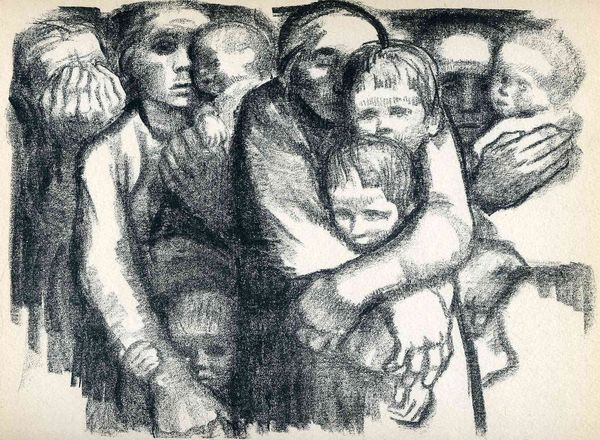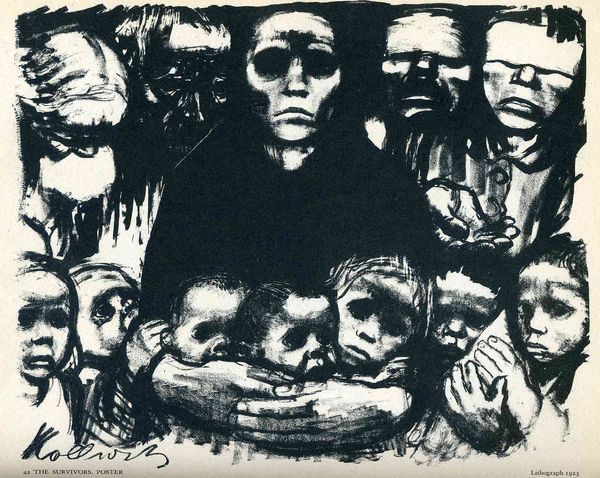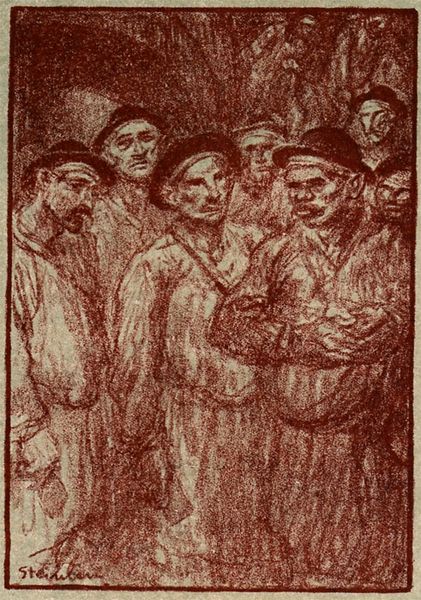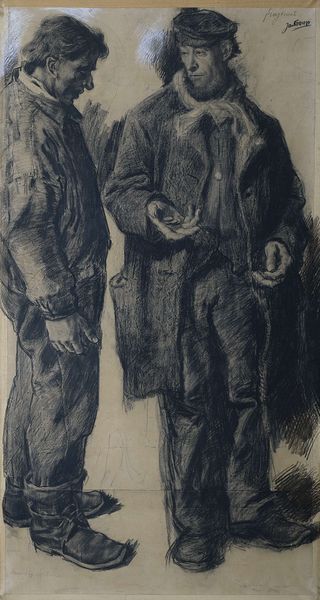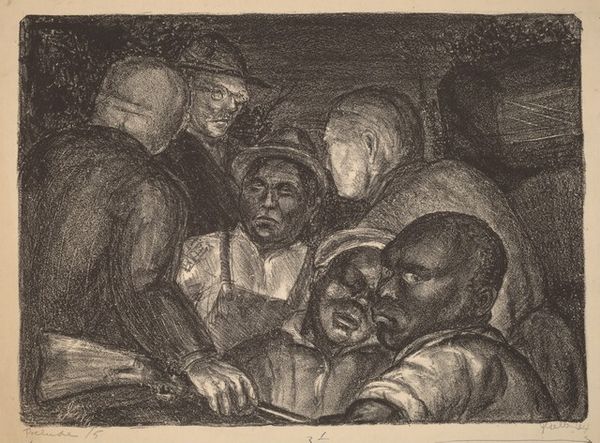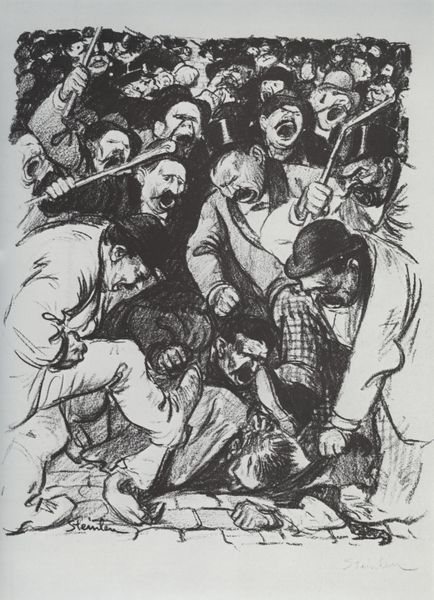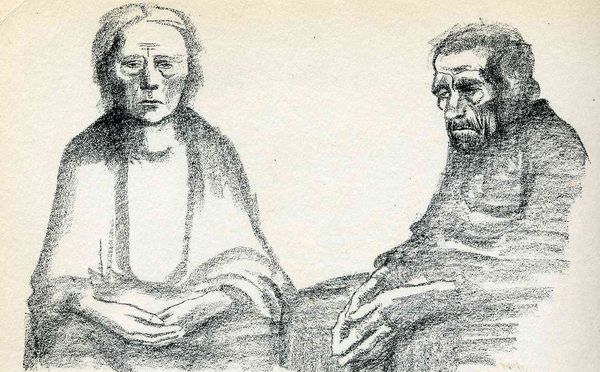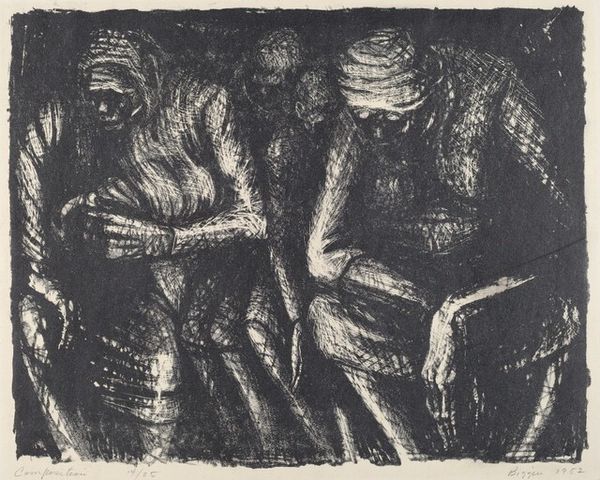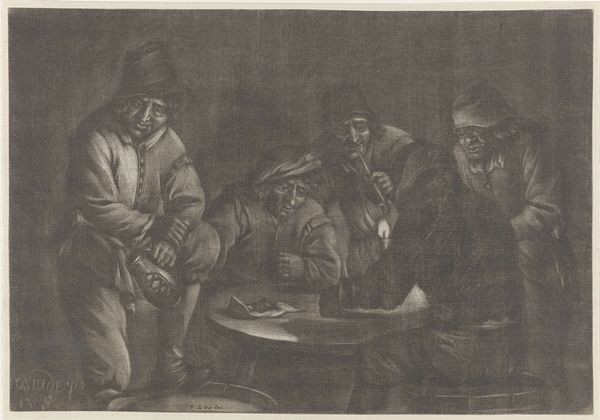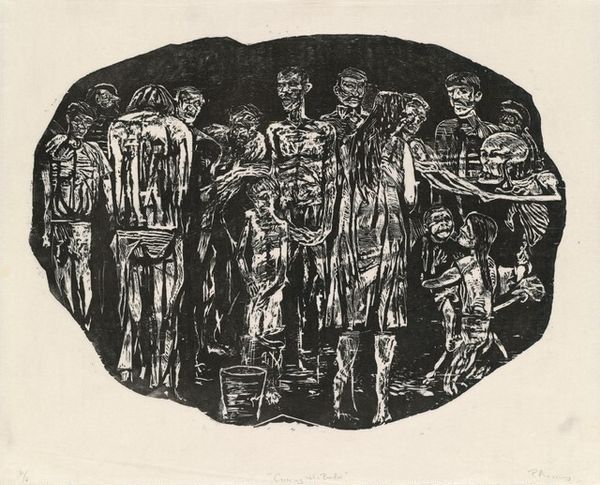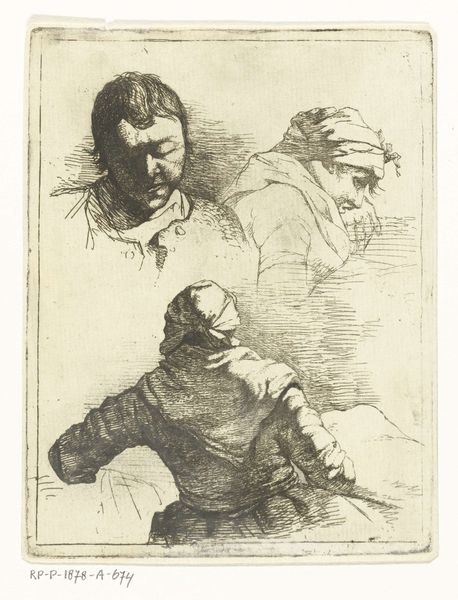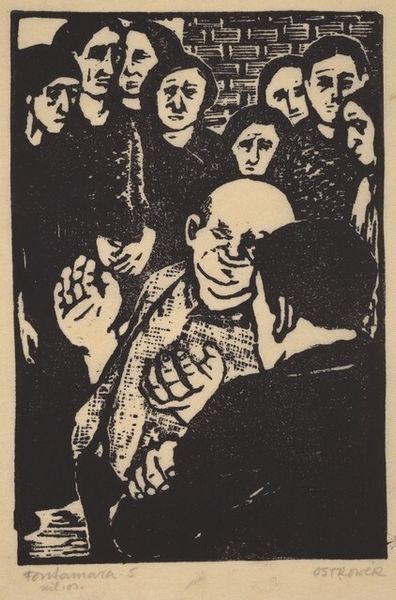
Copyright: Public domain
Editor: Here we have Käthe Kollwitz's drawing "Solidarity" from 1932, a graphite work depicting four figures huddled together. The mood is somber, almost fearful. What can you tell me about this piece? Curator: The raw materiality of graphite on paper is central to understanding Kollwitz's intent. The medium itself speaks of accessibility and directness. Consider the social context: Germany in 1932. This wasn’t a commission for the bourgeoisie. Editor: So, the choice of graphite suggests a conscious decision about accessibility and perhaps even a political statement through material? Curator: Precisely. Graphite allowed Kollwitz to mass produce prints from her drawings, making her art available to the working class. Furthermore, the visible labor—the dense hatching, the forceful lines—it mirrors the physical exertion of the working class. Editor: The way you describe it, the drawing almost becomes a document of its own production. Is the technique itself a form of solidarity? Curator: Exactly! The technique, the material, and the subject matter coalesce. The image is not just of solidarity; it embodies it. Even the support—likely inexpensive paper—reinforces this. Where do you think these materials came from and how would that change the interpretation? Editor: I hadn't considered that before, I see how the materials aren't neutral, but actively contributing to the work's message. Curator: The production and circulation are just as crucial as the imagery itself in understanding its powerful statement. Editor: That makes so much sense. I’ll never look at a simple graphite drawing the same way again. Thanks!
Comments
No comments
Be the first to comment and join the conversation on the ultimate creative platform.
